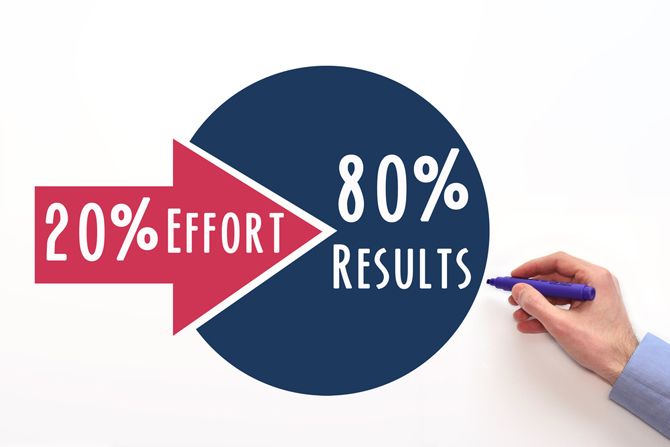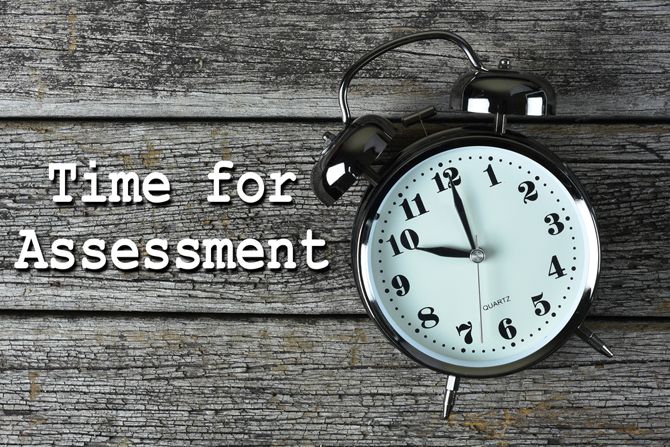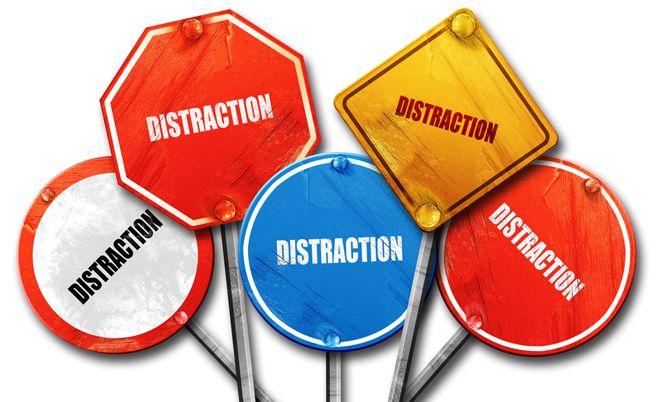How do you maximize your time? Do you use time management applications? Do you plan ahead and stay on top of your schedule? Or do you prioritize your tasks? If you have tried these things and still have trouble making effective use of your time, maybe you need a change.
The 80/20 rule is another option for time management and, with small adjustments, it might just be your ideal solution.
What Exactly Is the 80/20 Rule?
The 80/20 rule is also known as the Pareto Principle. The concept originated with Italian economist Vilfredo Pareto. He noticed that 80 percent of the country's land was owned by just 20 percent of the population. This led Pareto to examine this imbalance further and how it related to other areas.
Years later, a consultant named Joseph Juran applied this concept to business and dubbed it the Pareto Principle. From The Economist online:
Juran extended the principle to quality control, stating, for instance, that most defects in production are the result of a small percentage of the causes of all defects—what he described as "the vital few and the trivial many."
According to Investopedia, this means that:
- 80 percent of sales volume comes from 20 of products in the product line.
- 80 percent of a company's revenue comes from 20 percent of its customers.
- 80 percent of a company's production comes from 20 percent of its employees.
Time management is the most common use for the Pareto principle, as most people tend to thinly spread out their time instead of focusing on the most important tasks.
With all of this in mind, relating the principle to time management means that 80 percent of your output could come from just 20 percent of your time. Now the question is, how do you accomplish that? Here are four things that you can do.
Frequently Evaluate Your Tasks
If 80 percent of results come from 20 percent of effort, then it stands to reason that 80 percent of impact will come from 20 percent of your tasks. So identify the 20 percent of your tasks that will yield the 80 percent of results you seek.
When reviewing your tasks, ask yourself these questions:
- Is every task on my list labeled as urgent?
- Are the tasks on my list within my purview or do they belong elsewhere?
- Am I spending too much time on certain types of tasks?
- Are there tasks that I should delegate?
- Are all of these tasks really necessary to the overall outcome?
Continually Assess Your Goals
Your goals and tasks may be intertwined, but not always. Some might be completely separate. So think about your goals and the activities needed to accomplish them. Remember that 80 percent of those goals will be achieved with just 20 percent of the necessary activities.
Here again, take an inventory and see which 20 percent of activities gets you closer to the majority of your objectives. Check out these few examples and see if you can relate:
- If I work late today (20 percent activity), I can finish the item on my task list, make the boss happy, AND take tomorrow off (80 percent goals).
- If I make a salad to eat at my desk for lunch today (20 percent activity), I can work on that task, beat the deadline, AND get closer to my weight loss goal (80 percent goals).
- If I schedule regular meetings (20 percent activity), I can increase team communication, have a more successful project, AND be a better leader (80 percent goals).
Determine Your Prime Time
Everyone has specific times during the day when they are the most productive. You may do your best work between 9 AM and 11 AM. Or you might get more done between 3 PM and 5 PM. When do you feel the most energetic, focused, and productive?
Determine when your prime time is and use it to tackle the 20 percent of the tasks and goals that you have identified. This will ensure that you are spending your most productive time of day on the tasks and activities needed for the best results.
Identify and Eliminate Distractions
Whether you travel to the office each day or work from home, distractions are everywhere. Those nasty, little interruptions can cause loss of focus, delayed tasks, and an overall reduction in your productivity.
Using the 80/20 rule concept, FreshBooks surmises:
80 percent of your distractions comes from 20 percent of sources.
To take on those distractions and eliminate them, you must first identify them. Your list may look something like this:
- Flurries of emails
- Incoming phone calls
- Unplanned visitors
- Thirst or hunger
- Social media notifications
After you have your list of distractions, review it and see which ones interrupt you the most. You will likely find that only two or three (20 percent) are the bulk (80 percent) of the problem. Then incorporate ways to eliminate those interruptions. Here are some suggestions:
- Block specific times to work on emails.
- Let non-urgent calls go to voicemail.
- Close your office door.
- Have a drink and snack handy.
- Stay away from social media during work.
- Use a timer app to time your work sessions as well as your breaks.
Have You Tried the 80/20 Rule?
The Pareto Principle may bring success in certain industries and uses, but can it work for you? If you have tried the 80/20 rule with much success, do you continue to use it? Adversely, if you gave this concept a go with negative results, do you know what went wrong?
Still struggling? Adopt these online productivity habits to streamline your days and check out these time tracking software and app options.





